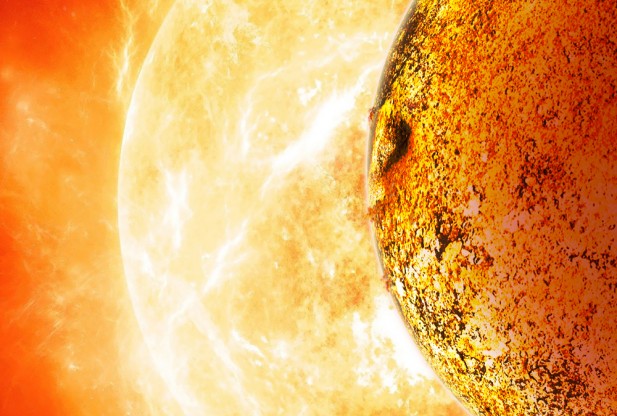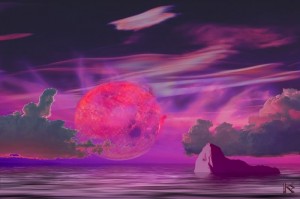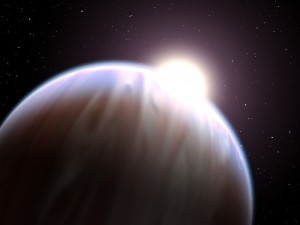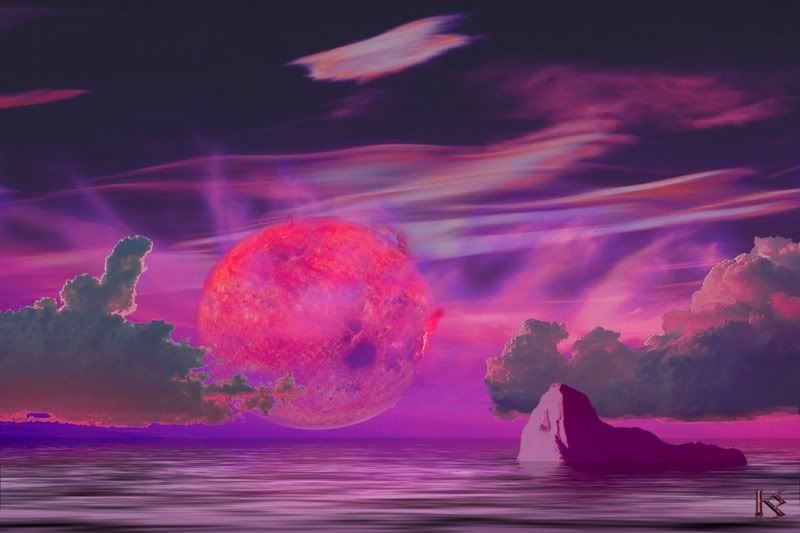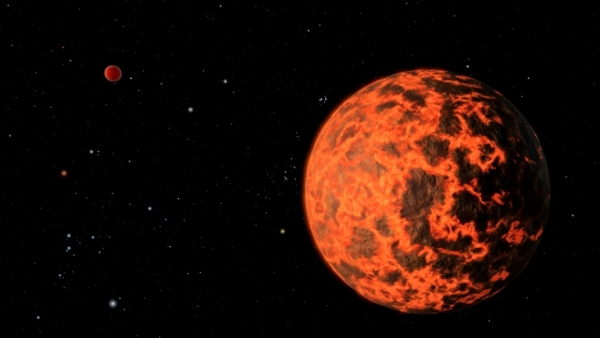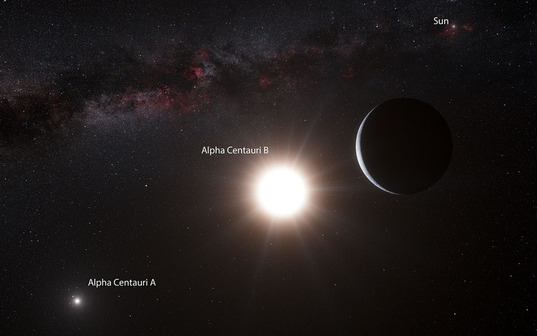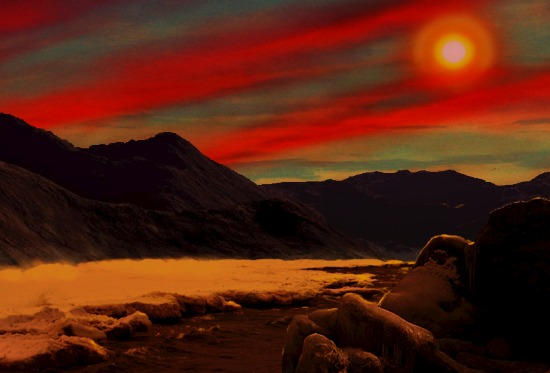
Kepler 186f, “Lycoris” by Karen Wehrstein. And she does this stuff at no charge, she depends solely on contribs. If anyone wants to drop a buck or two in her Paypal account at [email protected] that would be great.
We won’t know details of the surface of 186f for years, probably decades, at best. It could be a cool Venus, a warm Mars, or a water world with a thick, steamy atmosphere and no clear surface transition between vapor and liquid phases. It could have a highly reflective atmosphere or surface, locking it into a snowball state, colder than the North Pole and drier than the Atacama desert. It could be like nothing we have yet imagined. But we can have some fun guessing … [Read more…]

